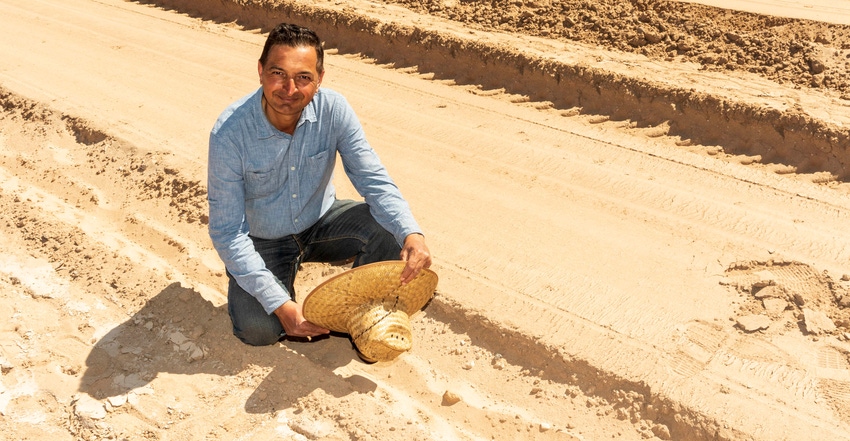
A Norwegian company is working with the University of Arizona to study a patented process to convert sandy soil into productive farm soil.
Desert Control developed a liquid natural clay (LNC) to convert desert sand into fertile soil in hours. That process is under study at one of UA's two research farms in Yuma, where the sandy soil there resembles beach sand.
The UA research farm where the LNC is being studied sits above the ancient Colorado River flood plain. "The valley soil is fertile, but the water never made it to the mesa, so it's all sand up here," said Robert Masson, a researcher with the University of Arizona Cooperative Extension.
Mo Segad, chief scientist for Desert Control, said this is the first such study in the United States. Projects are under way in Norway and the United Arab Emirates.
The patented process uses a unique formulation of clay that is processed into a liquid compound. The LNC is then sprayed directly in the soil where it forms a structure much like a sponge. The company touts its ability to save up to 50% of water and fertilizer by enriching the soil. The compound contains no chemicals, which Segad says could be used in organic fields. The product has not yet been approved by the USDA for organic use in the United States. Treatment can take just hours, depending on the size of the field.
‘Junkyard soil’
Desert Control is working with the university as a neutral third-party to prove efficacy and validate the process. Masson said he has already been contacted by farmers in the area to learn more about his study and how the LNC might work in their fields.
"This land was once kind of a junkyard soil," Masson said of the corner lot at the UA research farm. The plot overlooks the fertile Yuma valley. He expects his research to take three-to-five years.
During that time the company will install irrigation technology to quantify water applied to crops through drip irrigation. The first crops planted to the site are watermelons on 84-inch beds and bell peppers on 42-inch beds.
"When I look at this site, my mission here is really to transfer this to a garden spot," Segad said.
Information on Desert Control is available online at https://www.desertcontrol.com/
About the Author(s)
You May Also Like






